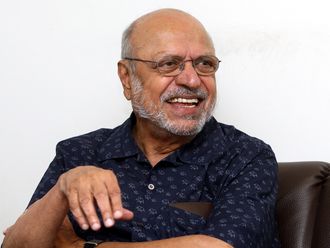
Chennai: Union Minister of State for Science and Technology Jitendra Singh has said that India’s lunar mission Chandrayaan 3 will explore the possibilities of human habitat on the moon.
The Union Minister said Chandrayaan has placed India as the leading global player as far as space technology is concerned.
“The outcomes are going to be at multiple levels to the benefit of India. It has placed India as the leading global player regarding space technology and the space sector,” Jitendra Singh said.
He said Chandrayaan-3 will try to find more evidence of water that may also make it possible to set up a human habitat on the moon in future.

The Chandrayaan-3 spacecraft would also be the first to land at the lunar south pole, an area of special interest for space agencies and private space companies because of the presence of water ice that could support a future space station.
Chandrayaan-3 was successfully launched on GSLV Mark 3 (LVM 3) heavy-lift launch vehicle from the Satish Dhawan Space Centre in Andhra Pradesh’s Sriharikota as per the scheduled launch time on Friday.
The journey from Earth to the moon for the spacecraft is estimated to take about a month, and the landing is expected on August 23. Upon landing, it will operate for one lunar day, which is approximately 14 Earth days. One day on the Moon is equal to 14 days on Earth.
The mission comes with a price tag of $74.6 million - far smaller than those of other countries’, and a testament to India’s frugal space engineering.
Experts say India can keep costs low by copying and adapting existing space technology, and thanks to an abundance of highly skilled engineers who earn a fraction of their foreign counterparts’ wages.
Chandrayaan-3, India’s third lunar exploration mission, will make India the fourth country after the US, China, and Russia, to land its spacecraft on the surface of the moon and demonstrate the country’s abilities for safe and soft landing on the lunar surface.
Chandrayaan-3 is the ISRO’s follow-up attempt after the Chandrayaan-2 mission faced challenges during its soft landing on the lunar surface in 2019 and was eventually deemed to have failed its core mission objectives.
Chandrayaan-3 will be inserted into the Lunar Transfer Trajectory after the orbit-raising manoeuvres. Covering a distance of over 300,000 km, it will reach the Moon in the coming weeks. Scientific instruments will study the Moon’s surface and enhance our knowledge.
Chandrayaan-3 is equipped with a lander, a rover, and a propulsion module. It weighs around 3,900 kilograms.
In 2019, ISRO’s Chandrayaan-2 mission successfully deployed an orbiter but its lander and rover were destroyed in a crash near where the Chandrayan-3 will attempt a touchdown.






